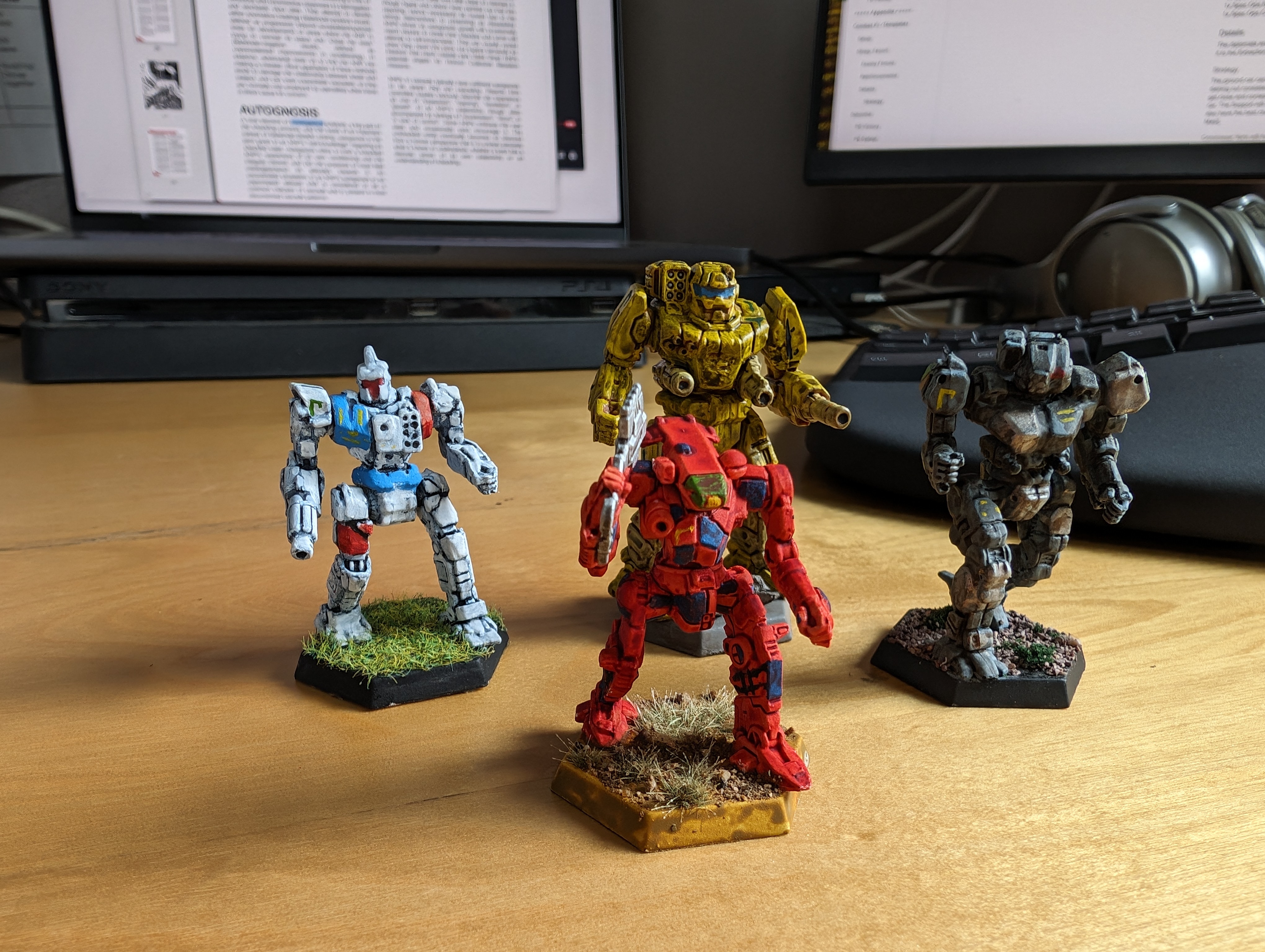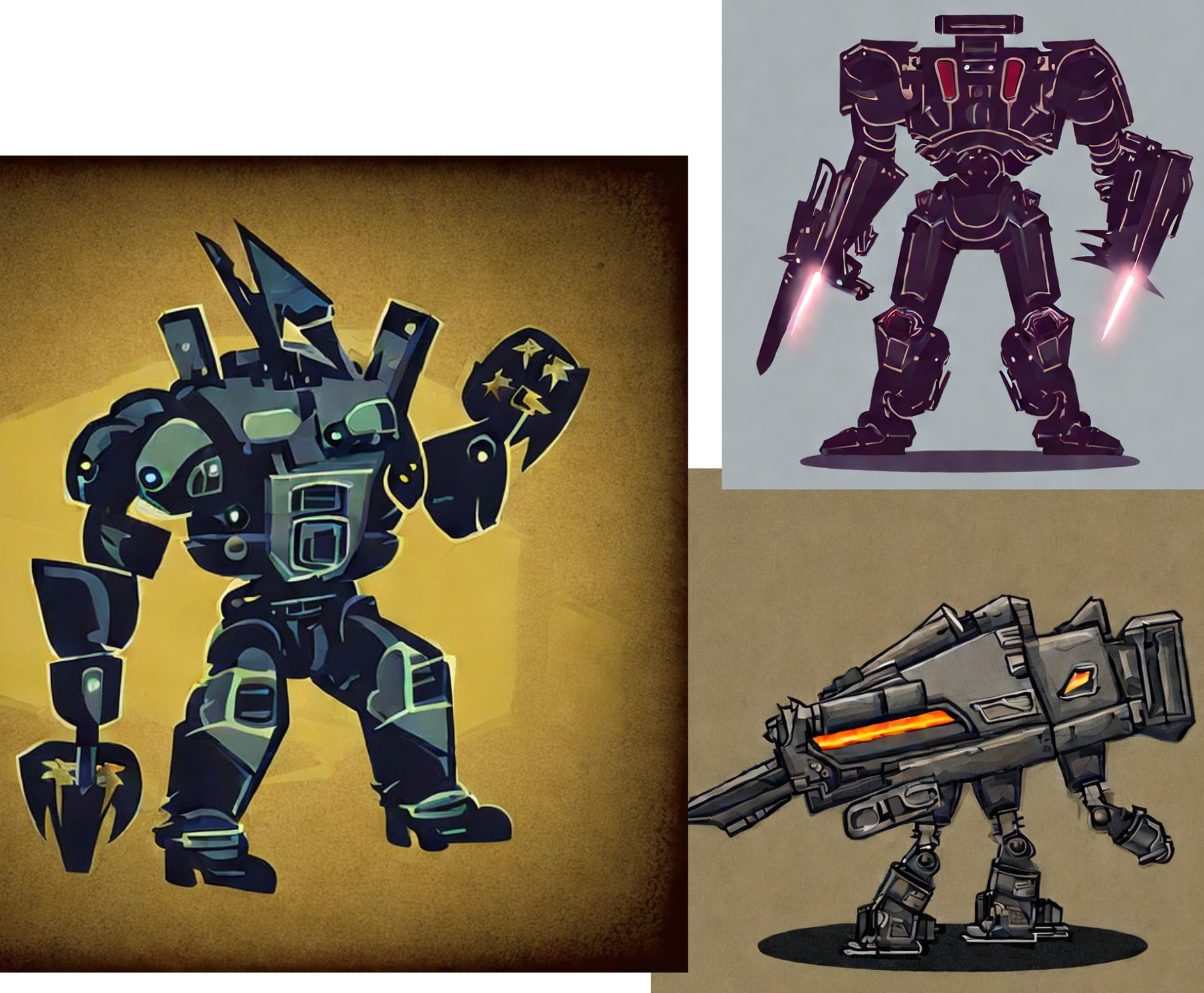This week I want to discuss a very different style of game: Lancer. The pitch is mech combat in a post-scarcity far future, fighting to make sure everyone has access to equal rights, a decent standard of living, and representative government. To be honest, the vision of life in the Core in Lancer is one I'm pretty on board with.
Digression: for a game that is all about fighting, I love the world building and setting in Lancer. Miguel Lopez and Tom Morgan do an amazing job of building a compelling galaxy with lots of interesting stuff going on. While the focus of this game is on mech pilots, I can easily imagine any number of interesting games set in this same world. I just picked up Lancer: Battlegroup, and have only skimmed it but it seems to continue in the same vein of painting a very vivid picture of why these massive fleets are blasting each other in the cold dark reaches of space.
Campaign Overview
This is a very different style of game than most that our group plays. There is almost a 100% focus on tactical fights1 - at least for us, breaking out the battle mat meant we were gonna spend the whole session on that one scenario. The rules offer a ton of customization options for mech building, and the combat rules have a nice balance which offers lots of meaningful stuff to do without being overly complex. As a GM, this was a good opportunity to focus on encounter design. Objectives and goals other than "kill 'em all" for most fights kept things interesting. I also tried to embrace more environmental storytelling. When the whole session is going to be on one battlefield, add details to the battlefield to reflect where they are and what is going on in the story.
This was an interesting game to play - clearly right in the "I love this!" wheelhouse for some players, while being on the opposite end of the preference spectrum for some others. We were up front about this being a limited arc (8 sessions, which proved popular enough that we came back and did a 5 session sequel 8 months later) which helped. In the end even the players who were somewhat skeptical going were positive on the overall experience.
I went with a linear campaign structure - I had a series of plot points set up, each one a battle. There was room for success or failure in earlier ones to influence the setup or balance of forces later, but I didn't want to even commit to running the game until I had a structure mapped out that I was happy with. I definitely didn't want to deal with significant branches where I wasn't sure what the next encounter was going to be.
This mostly had to with the complexity of each fight, combined with the need to
tell the story in each one. As long as I knew the context, I was fine fleshing
out some details in the week leading up to a session, but I needed that whole
week. I didn't want to be wasting time trying to figure out what the heck was
going to happen next and scrambling for an interesting setting for the next
encounter.

This is not the only way to run Lancer, and I could imagine a more flexible approach for a group leaning heavier on the narrative side of things. But this worked for us.
Docs Setup
These campaigns took place a few years ago - I don't know if Obsidian existed yet, but if it did I was certainly unaware of it. So I stuck with Docs, and in this case it worked perfectly well.
Structure
I used several docs for this game. The overall setting and the system where our game was set had enough background going on that I created a player facing 1-pager2 to summarize the relevant information.
I used an overall campaign doc (one for the original & a separate one for the sequel) to summarize "whats really going on" for the overall plot and outline the story beats/combat missions I mentioned above. This wasn't that long in the end (a couple of pages), but I needed the overall framing before I was confident enough to run the game.
I had a separate sessions notes doc. This was a bit different than most of my
sessions notes, in that there was more up front prep required. Each week I would
use AI image generation (this was a couple years ago, most of it was pretty bad
in a way that weirdly worked) and
Token Stamp to create a bunch of enemy
hex counters that I printed out.

Given the fixed structure and short number of sessions, there was much less need for writing notes about what actually happened - whether they succeeded or failed in a mission was obvious, and mostly all I needed was that binary state to feed into the next mission.
 I kept a dedicated NPC roster doc, tracking the various NPCs known to be
important to the plot as well as the random folks
introduced during downtime scenes. This was overall small enough, and
relationships were straightforward enough, that just navigating via tabs in the
doc worked fine.
I kept a dedicated NPC roster doc, tracking the various NPCs known to be
important to the plot as well as the random folks
introduced during downtime scenes. This was overall small enough, and
relationships were straightforward enough, that just navigating via tabs in the
doc worked fine.
To be honest, when I was reviewing the various docs during the process of writing this article, I was a bit surprised at how thin they were. My memories of the game were of a lot of stuff going on, but the meat of each session was on the table - once I had a sitrep and Order of Battle, an evening of combat was closer to a board game with lots of tactical choices in the moment that didn't need to be recorded for posterity.
Conclusion
Docs worked perfectly fine for these games. In my opinion, it is due to the game being linear and (roughly) known up front rather than being a wide open sandbox. If I run Lancer again, I'm not sure I would need Obsidian for it - Docs would be fine. The one advantage Obsidian has is the slow growth of context over time. If I did end up running three or four different short campaigns that were each related, then individually they may not benefit but building up the web of details over time could prove useful.
Previous: AI Usage
Next: We wrap up with a discussion of player tools